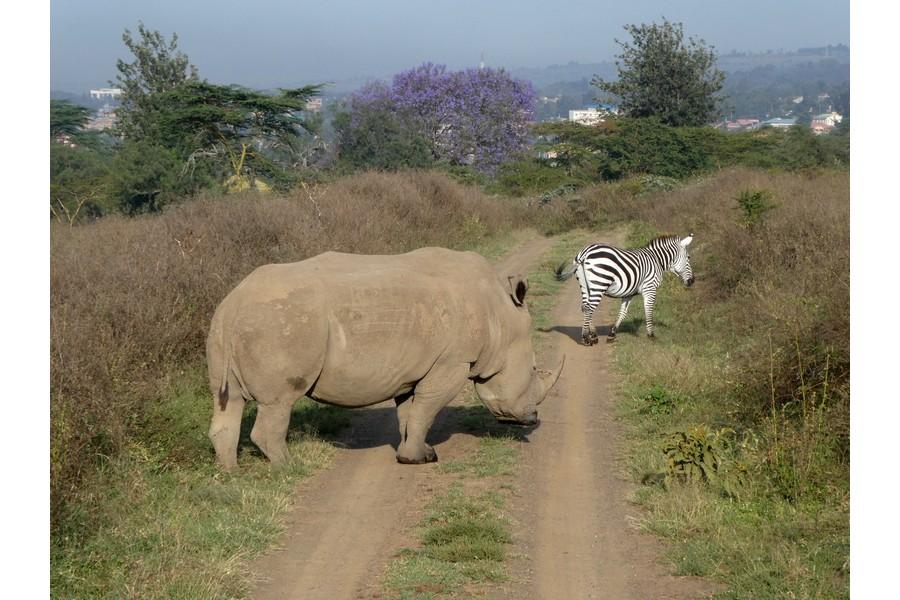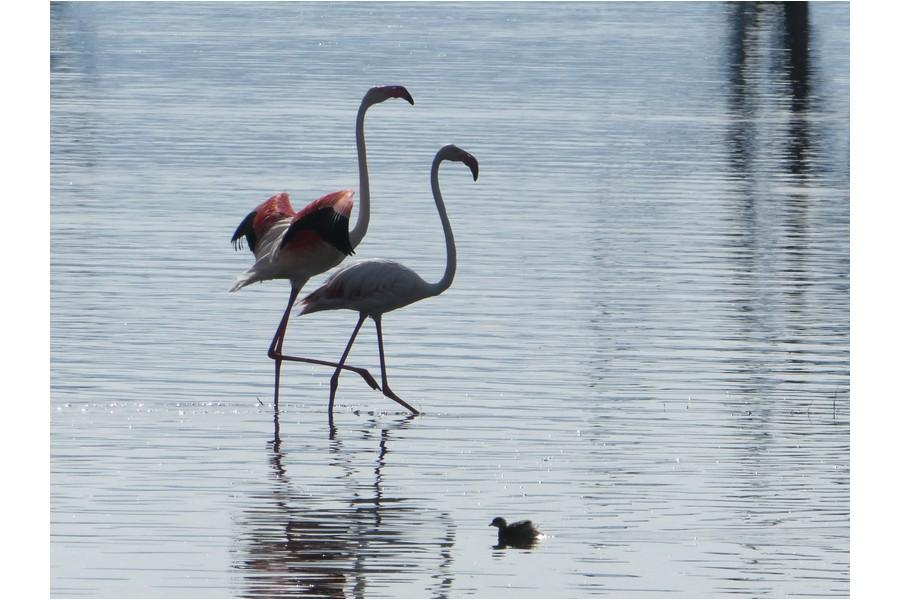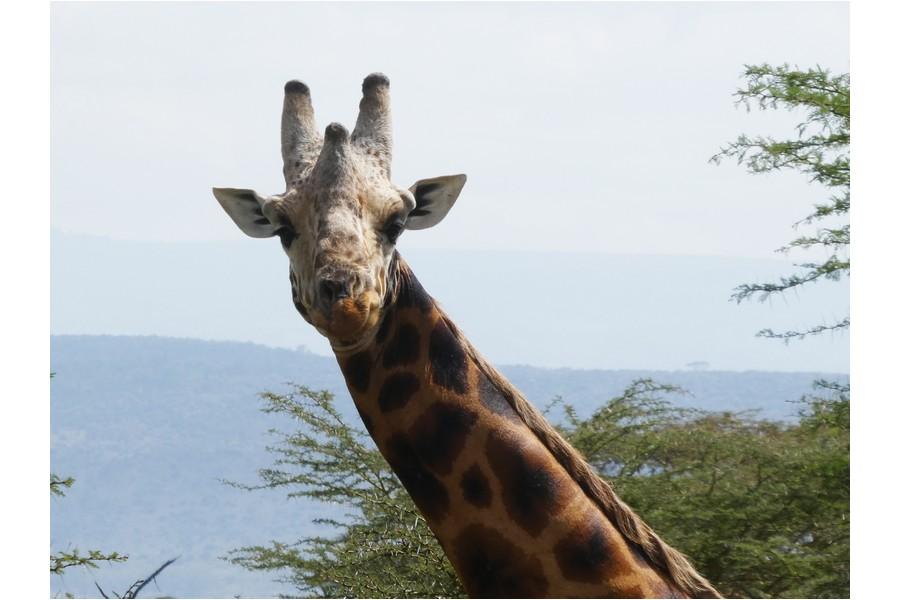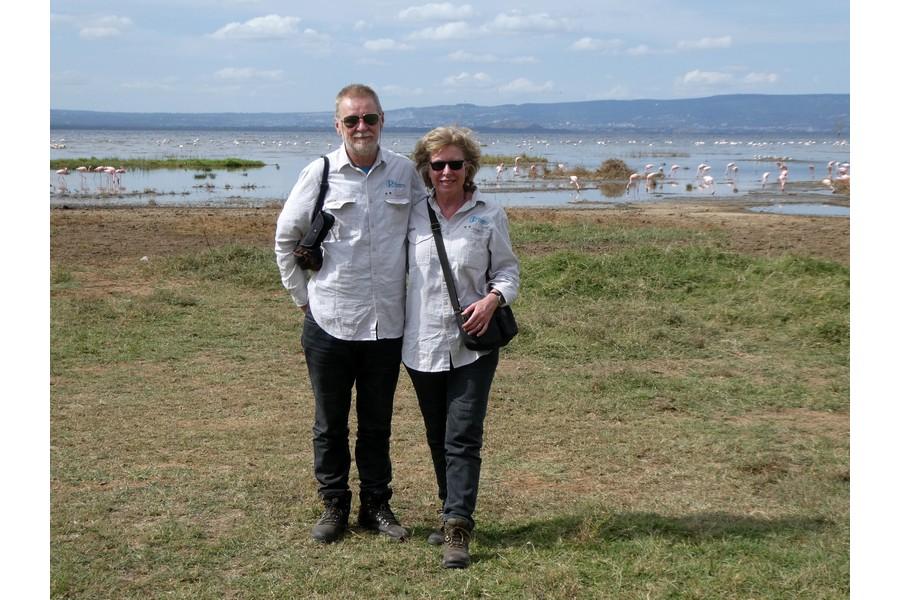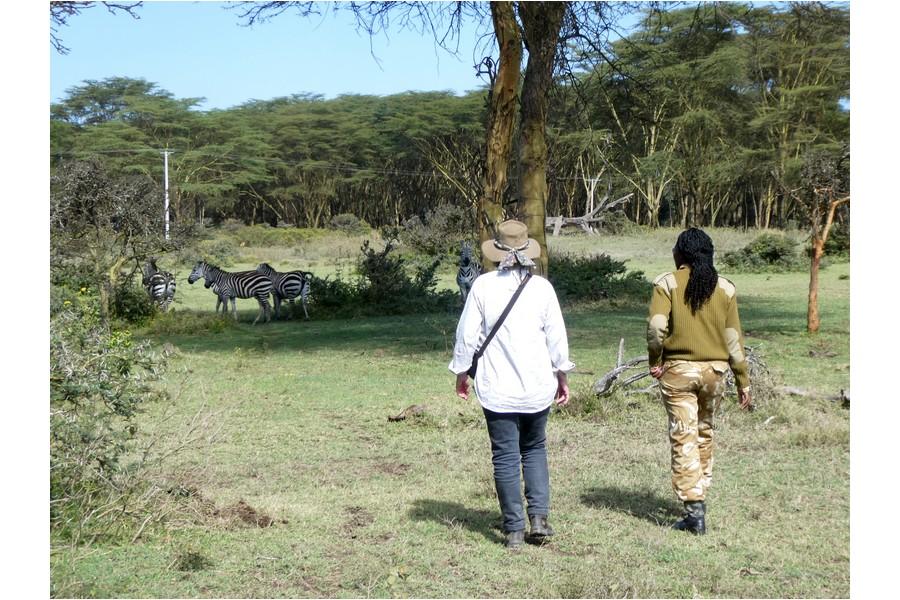Rift Valley Lakes
Country
We wanted to explore some Rift Valley Lakes and chose Lake Nakuru, 150kms north-west of Nairobi, and Lake Naivasha. Lake Nakuru National Park has been designated a UNESCO World Heritage Site. In past years, it has been famed for the Flamingos, both Lesser and Greater, that used to flock to its shores in the millions to feed on the cyanobacteria that live in its alkaline waters. The park is also a conservation area for endangered black and white rhinos, and is a sanctuary for the endangered Rothschild Giraffe.
Water levels in the Rift Valley Lakes, particularly Nakuru, Elementatia and Naivasha, have in the past two months increased, recording levels superseding the 2012-2013 records when the lakes experienced a major increase. Flamingos have left these lakes, migrating because of diminishing algae which is their main food. Algae thrives in highly salty water but the increased inflow of fresh water has diluted the lake's salt. There seems a lot of theories as to why water levels have increased, but the fact remains that drastic changes have occurred in these lakes in the past 5-6 years. What we saw were dead and quite eerie looking trees; the previous front entrance, shop and restaurant to the park, underwater; and hundred’s, not millions, of beautiful pink and white flamingos.
We saw many of the 100 remaining endangered white legged Rothschild Giraffe. A particularly special treat for us was to see up close, 5 of the 25 White Rhinos that live in the park. We didn’t see any of the 10 Black Rhinos as they must have been hiding in the bushes that day! These magnificent, rare creatures are fast facing extinction. Rhino horns have no bony core. They are made entirely of Keratin; thousands of hair-like strands packed tightly together and attached to the scull by tough connective tissue. This is unique amongst mammals. Sadly poachers killed 1 Black and 2 White Rhinos in this very park only five months ago. We heard, the killers were caught and executed. Hopefully, a strong message to other poachers!
This happened barely two weeks after 11 Rhinos were translocated from Nairobi and Nakuru National Parks to Tsavo East National Park. It emerged the animals died after suffering acute dehydration after drinking water with high salinity levels. An inexcusably botched exercise. Seriously, what hope do these animals have?
On a brighter, positive note, we visited Elsamere on the shores of Lake Naivasha. Elsamere is the previous home of Joy and George Adamson, famous for their conservation work with Africa’s big cats, specifically lions, and instantly recognisable for their movie “Born Free”. George was a game warden and their story really began when George brought home three lion cubs back in 1956. He had killed the mother out of self-defence when the lioness charged him. Joy and George decided to keep the smallest cub to train, study and release back into the wild. They called this female lion, Elsa.
Joy and George either set up or were the inspiration for a number of conservation trusts and foundations. Royalties from books and films were also channelled into a charity set up by Joy called the Elsa Conservation Trust. Both Joy and George upon their deaths bequeathed their estates to this trust, including Elsamere, the lovely home they had shared. We enjoyed a buffet lunch on the grassed area of Elsamere overlooking the Lake. The museum and the gardens were a delight. Come time for afternoon tea, the resident Black and White Colobus Monkeys also enjoyed their own version of high tea, in between swinging from the vines and rolling around, playing on the grass.
To conclude our wildlife experiences in Kenya, we walked around a section of the shores of Lake Naivasha with a ranger. Seeing zebra, giraffe, buffalo, hippos, eland and impala from the safety of a game vehicle is one thing, but to walk alongside them takes the experience to a different level – ground level, some of you might chime – but psychologically it felt exhilarating and so primal. We were just animals walking the earth with other animals.
The ranger was called back to take another group for a walk. It hadn’t been compulsory to have someone guide us through the bush, just that it’s a ranger’s job to know where the game are. We took this as an opportunity to say we would make our own way back, and proceeded to find a comfy place to sit and just watch. This was so very special…







